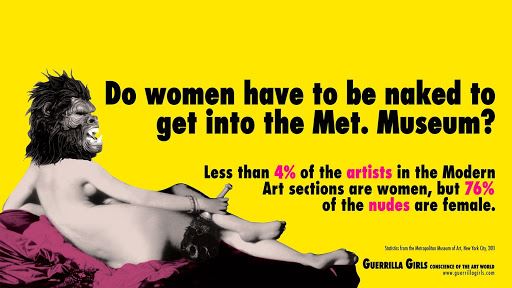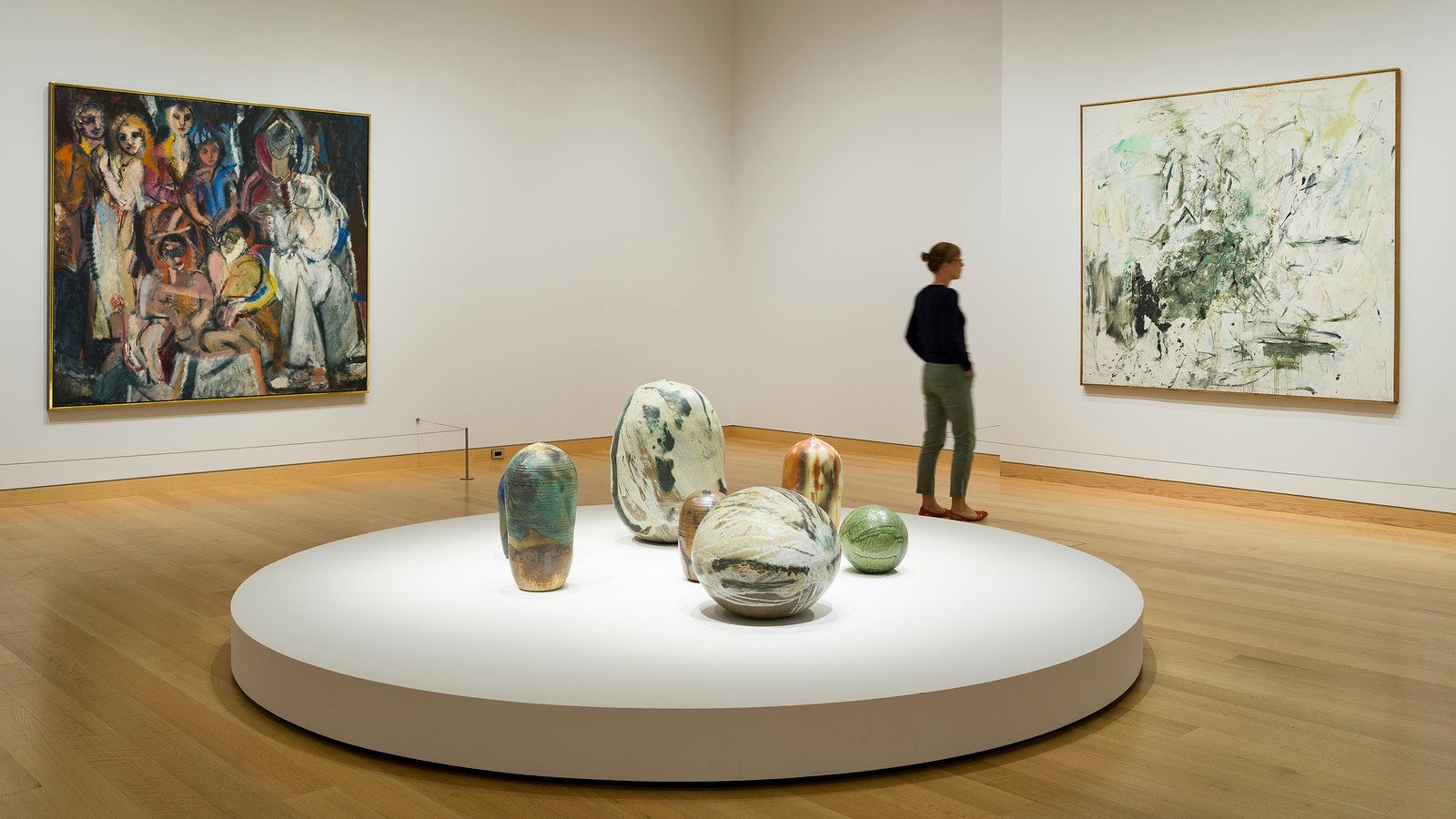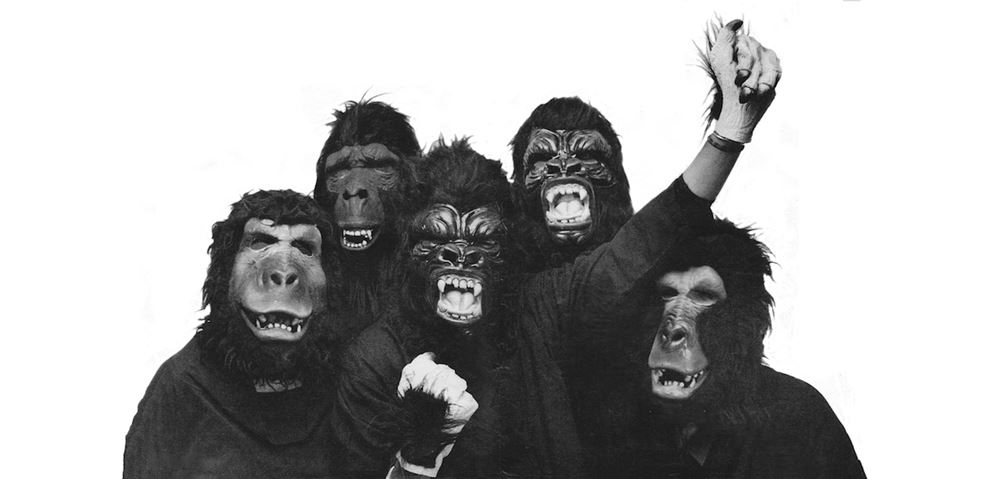We are now in 2021 and, despite gender equality should already be present in every aspect of society and, specifically, in the art sector, women artists are still discriminated and marginalized in museum collections all over the world. Museums, from the smallest to the largest, such as the Tate in London, the Centre Pompidou in Paris and the MoMa in New York, allocate only a small space in their collections to women artists’ works.
At first glance we can think that our museums are doing an excellent job in balancing the relationship between the visibility of the works of male artists and the visibility of women artists’ works within their collections.
Reality, on the other hand, differs profoundly from what one might think of museum collections.
About thirty years have passed since Guerrilla Girls, a group of feminist activists working to denounce the discrimination within the art world, launched a poster campaign denouncing museums, dealers, curators, critics and artists who have been responsible of the exclusion of women from art exhibitions and publications.
The poster published in 1989 by the Guerrilla Girls with the slogan “Do women have to be naked to get into the Met Museum?” openly denounces the low presence (just 5%) of works by women artists in the Met. museum of New York, against the high number of works by men depicting naked women.

To date, one might think that the problem is overcome, and that gender equality has now been achieved in the art world. This is what the catchy headlines of major newspapers such as The Times, the Telegraph, the Independent and the New York Times make us think by reporting how women are “(finally) getting their turn”.
The reality, however, is another one. It is what these newspapers and museum public relations professionals are trying to keep us hidden behind propaganda titles and gestures.
Women artists, whether they belong to the art of the past and of antiquity times, or are part of the contemporary era, are marginalized and excluded from museum collections, from the smallest to the largest and most important, including that of Tate, MoMa and Centre Pompidou.
As reported by the Tate Annual Report of 2015, in the Acquisition Highlights section, only 35% of Tate new acquisitions has been made by women artists. Taking also into consideration the financing for the acquisition of works made by women, only 13% of its total amount was used for the acquisition of women’s works.
The assumption of gender equality professed by newspapers and museums has also been challenged by the data released by Artnet, an art market information company, in 2019. According to them, between 2008 and 2018 only 11% of works acquired by American museums were made by women artists.

It is clear from the data presented that the achievements of women in the art world will not be recognized and made known for many years unless international institutions of great importance, such as Tate and MoMa, do not start to follow the words spoken to the press with tangible actions and do not start to acquire the same amount and financial values of works by both male and female artists.
Online editorial staff






 This site uses anonymous technical cookies to ensure navigation and third-party cookies to monitor traffic and to offer additional services such as viewing videos or messaging systems. Without third-party cookies some pages may not work properly. Third-party cookies can track your activity and will only be installed by clicking on the "Accept all cookies" button. You can change your selection at any time by clicking on the "Cookie" link on each page at the bottom left. By clicking on one of the two buttons you declare that you have read the privacy policy and to accept the conditions.
This site uses anonymous technical cookies to ensure navigation and third-party cookies to monitor traffic and to offer additional services such as viewing videos or messaging systems. Without third-party cookies some pages may not work properly. Third-party cookies can track your activity and will only be installed by clicking on the "Accept all cookies" button. You can change your selection at any time by clicking on the "Cookie" link on each page at the bottom left. By clicking on one of the two buttons you declare that you have read the privacy policy and to accept the conditions.